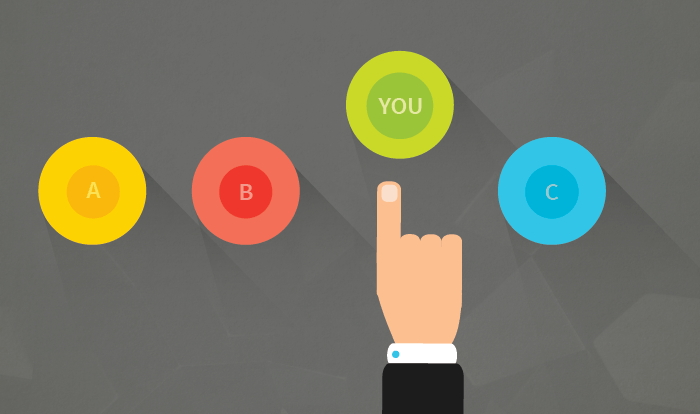Elevate Internal Business Functions With Gamification
So how do you use gamification to scale businesses? The idea behind gamification is simple: the more a person can be engaged in an activity, the more that person will want to participate in that activity. That's easy to quantify and easy to apply to a broad range of activities. Take the example of people who take surveys, respond to surveys, or play games: these are all ways for people to be engaged with the information that they're providing, and with other people who are taking the surveys and the information they've provided.
How To Use Gamification For Your Business
You might think that because all of these tasks involve being engaged with the information that you provide, there's no way to make money off of them. In fact, a lot of businesses have found that engaging their customers in surveys and providing surveys that are fun and entertaining can help increase their profits. By creating surveys in which you have an obvious monetary reward tied to them (such as an exclusive branded bag), you create a situation in which people are more likely to take surveys and respond to questions in order to get the goods that they need. Gamification works the same way. You might set up an online casino, for example, in which players can be awarded points by playing certain games; these points can be redeemed for items and other things that they might want to purchase.
One of the most powerful things about gamification is that it helps you learn a lot about your customers. Through gamification, you can learn about what your customers are looking for and what they aren't looking for. Through it, you can also learn what things those customers are actively looking for so that you can provide those things. The beauty of it all is that the more you learn about your customers through gamification, the more you can improve your business. Here are some examples of gamification that you can use to improve your business:
Surveys
Most companies offer some kind of survey site. This is where you can have your customers complete a questionnaire about your product or service and then get paid in cash or prizes for your survey results. The reason why you want to use gamification here is that you can combine this with other methods of measuring customer satisfaction, such as surveys and questionnaires. Through this, you can make sure that you are paying your customers fairly and that you are getting measurable results from your efforts.
Website Games
There are millions of websites out there that allow people to play fun, engaging games on the internet. These games are a great way to learn more about your customers and to entertain visitors on your website. By having your website games associated with your website, you can make more money off of those players who visit your site.
Surveys
Surveys can be an effective way to improve the effectiveness of any business, even your own. For one thing, they are easy, quick, and convenient to complete. However, they are also expensive; thus, they do not always get the job done. Gamification is often used to make the surveys on these sites more fun and engaging so that users will actually feel like they are taking part in a business study, instead of feeling like they are wasting their time.
Invitations To Conversations
Businesses often hold round-table meetings, where each member of the group gives their own small suggestion or opinion on a certain topic. However, the meetings can be very dull and tedious to those who do not know much about the business at all. Gamification here adds an element of surprise so that the guests get to learn more about your business through the gamification of the conversation.
Some businesses might feel that these methods are too complex to implement on their website. However, you can learn more about how they can use gamification in their business by reading more about the various techniques being used today. You can also find out more about the different areas in which they can integrate this into their website. There are many different things that you can use gamification for, and there are many different things that you can learn about how to use it in your website to improve your business. If you are interested in getting more information on how to use gamification in your business, then you can find out more information on the internet.
What Is Gamification?
What exactly is gamification? A quick definition. Gamification is the application of gamification as a way of increasing profit and sales through the application of strategic marketing. It involves all types of commercial techniques that involve the usage of gamified ads, including TV, radio, newspaper, print, direct mail, internet banner ads, and others. Gamification is used as a strategic marketing tool to generate greater demand for a particular product or service, thus increasing sales and profits.
There are many ways in which one can utilize gamification for growing a business. One obvious way is by making the user goals of the program's gamified elements more personal and challenging. This is done through the addition of achievements and points to the mix. For example, the user may be challenged to produce a certain number of sales in a specific amount of time, then be awarded a point for each sale. This encourages the user to grow their business with an increased sense of urgency.
Another way in which gamification can be applied is through reward mechanics. Gamification reward mechanics can be very simple, but it can also be highly complex. It may involve awarding points, money, and other things depending on the nature of the goal. This type of reward mechanism has been successfully used in gamified learning systems, such as Radiology School's eLearning application.
As mentioned before, gamification software market companies have identified areas in which they can improve the profitability of various business ventures. One area in which this has been particularly successful is in growing employee engagement. This is especially true in rapidly growing industries where employee turnover is common and the need for new employees is great. Gamification software has enabled growing businesses to successfully increase employee engagement.
However, there are many other uses for gamification software market companies have observed. One of these is helping healthcare practitioners to engage with their patients. In this case, a healthcare provider may use game mechanics to challenge each patient on their level of engagement with the care provider. For instance, a doctor may ask a question pertaining to a specific ailment the patient has, then give a point based on whether or not the answer was accurate. Following this prompt, the doctor may give a recommendation to the patient on what they should do next, much like a doctor would give a physical description of a symptom.
Gamified training modules have been applied to a wide variety of businesses, from those focusing on customer retention to those focusing on increasing productivity and reducing costs. By utilizing badges as customer engagement tools, many businesses have seen a significant increase in customer retention. These are a valuable tool for attracting and retaining customers because they help keep employees motivated, while at the same time allowing them to earn a monthly paycheck while engaging in a fun, hands-on, task-oriented work environment. Gamification has enabled many businesses to enjoy a reduction in employee turnover, which is an important key to growing a business into a larger corporation.
Gamification is also used in other areas beyond the workplace. For instance, loyalty programs are becoming commonplace in many retail stores. These tools often involve tasks that require consumers to input certain pieces of information, such as their name, in order to qualify for special discounts or freebies. Gamified loyalty programs have shown the ability to reduce losses, boost revenue, and foster loyalty.
Gamification, while a relatively new term, has quickly become a familiar term in the business world. Companies across many different industries use these mechanics in an attempt to foster more efficient work processes, reward high productivity and reward exemplary employees. Although there is still some debate about what exactly gamification elements do for the human mind, studies have shown that playing these games can increase one's mental abilities, enhance memory function, reduce stress levels, and motivate behavior. Gamification has been shown to be a valuable tool that can be used for many different business purposes.
How Can A Game-Simulation Approach Grow A Business Like A Game?
Businesses across the globe are realizing that growing a business like a game requires adapting business practices to the needs of a gamified learning environment. Gamification—the process of applying game principles to business—has been applied to education, workforce training, and more. In business, the growing practice of gamification is starting to become a trend that businesses can't afford to be without. Learning, business, and technology are all about adapting to changing needs, which requires a lot more than just sticking to old processes.
Gamification helps a business to change from being a boring or traditional classroom-based learning environment to one that incorporates technology, games, and data into the learning environment. With the right tools, a business can incorporate gamification into its everyday business practices, helping it learn new ways of doing things, implementing new ways of doing things, and even leveraging what's already in place through gamification. This doesn't mean that businesses have to stop using traditional classroom-style training; what it does mean is that they need to recognize that gamification as a learning strategy has value beyond classroom learning. The best gamification strategies not only teach students outside classroom situations, but they teach students how to think and innovate, which is key to growing a business like a game.
The value of gamification extends beyond classroom learning, however. It can also help businesses that don't have the budget for a traditional classroom environment to develop their own personalized eLearning programs. Just like traditional classrooms, eLearning lets students interact with each other and with a variety of computer software, including tools that allow for the creation and sharing of content. A large variety of applications and tools are available that help gamification meets the needs of a range of business models.
Gamification is changing the way that many businesses teach their workers. Traditional business training methods focus on the here and now; how workers can learn to better perform their jobs today instead of how they might learn in a classroom situation. Gamification, by contrast, places immediate emphasis on the future. Instead of teaching workers how to get things done today, gamification teaches them how to learn to get more things done in a shorter amount of time. This is why many managers say that gamification is a much more effective way to grow a business than the old-fashioned, one-dimensional approach.
Gamification training methods also allow for a much more flexible way to deliver lessons. Traditional training methods require a business to set up and schedule classes. Depending on the type of business, this might mean that the business has to find a space where a teacher or instructor can physically teach employees. Some companies have even had to move from their usual location when they couldn't find a teacher to show employees how to use certain software or handle particular tasks. Gamification offers an alternative: employees can learn on their own from eBooks, games, or software that is distributed throughout the internet.
The beauty of this approach is that employees don't have to worry about finding a teacher during off-peak hours or trying to cram for tests. The software or eBook typically comes out of the office and can be used at any time. In addition, this type of training is generally more affordable than traditional methods because it doesn't require traditional certification or high grades to participate.
Gamification can also help businesses streamline processes. Like a game, a business can "play" a variety of activities to determine which skills a person needs to improve. Through this type of learning, a person can grow in their understanding of a particular business process or develop new skills related to using particular computer programs. Gamification is particularly helpful to those who are not skilled IT professionals because it allows them to master rather than do basic IT tasks such as filing, mailing, or retrieving documents, as well as answering basic questions about the day's activities.
Business owners can also get the most out of this training by encouraging employees to participate. Some managers and supervisors can allow employees to take advantage of this learning by providing online badges or prizes for participating. For example, if employees take part in a game that helps them learn the basics of an accounting process, they will be encouraged to take a quiz to determine how well they understand the process. Those with a high score will likely receive a certificate or other reward. It's no wonder then that some businesses encourage employees to learn new skills through a game-style training program that can grow and improve a business in ways other training methods can't.









